Spain is one of the most touristic countries in the world. Its beauty is everywhere, imprinted on the historic buildings, stretches along the long beaches, crosses the lively streets, and explodes into the impressive cathedrals. Also, it doesn’t fail to amaze with its modernity, art, traditions, and encounters between different cultures!
Check out these amazing hotel deals!
- Save up to 30% on your hotel in Hawaii!
- Last-minute holiday hotel deals
- Top hotel deals for a new year trip
- Visiting Paris? Find the Best Deals & Reviews at TripAdvisor.
- Save 30% on hotels in Ocean City, Maryland...a TripAdvisor Top 10 Summer Destination!
- Save up to 30% on your hotel on your Winter Vacation!
- Find top-rated hotels at the lowest prices on TripAdvisor. Check rates now!
- Save up to 30% on hotels for a romantic getaway!!
To celebrate its immense beauty, here we present the 10 most beautiful cities in Spain that make it a truly fascinating country!
10. Granada
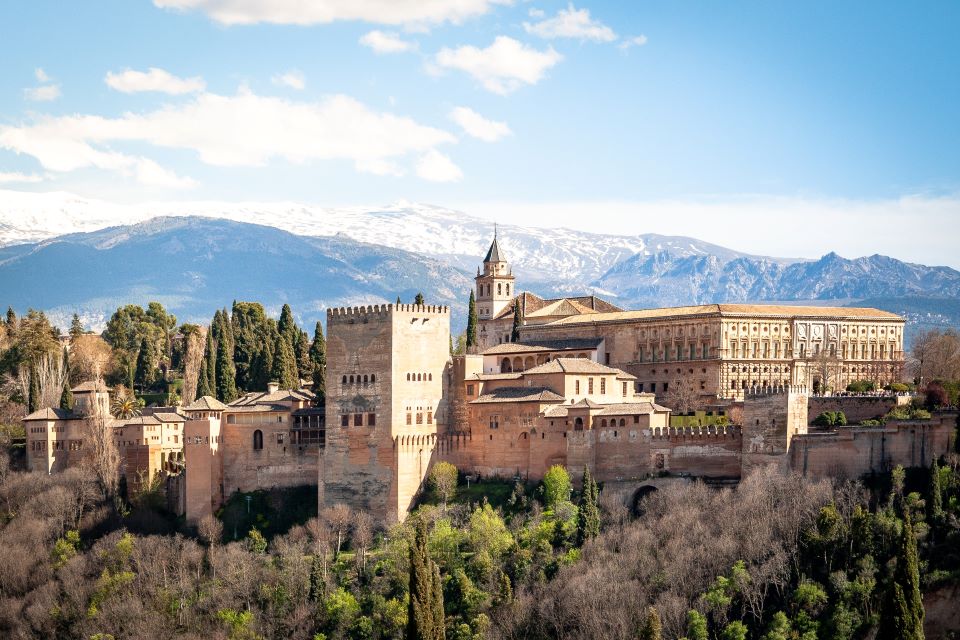
With its 917,445 inhabitants, Granada is located in the eastern part of Andalusia. It rises at the foot of the Sierra Nevada mountain range and is located between two rivers, the Darro and the Genil.
Its position, wedged between the mountains and not too far from the sea, results in a continental climate with very cold winters and quite hot summers.
The most famous monument, which is one of the most visited in Spain, is the Alhambra, the fortress built by the Arabs in the 14th century. Another site worth a visit is the complex of gardens near the fortress, which extend up over the mountains.
Then, in the city, there is the Spanish Renaissance-style cathedral, the Capilla Real. In it, the Catholic monarchs, King Ferdinand of Aragon and Queen Isabella of Castile rest. There’s also an art gallery.
Finally, there’s an excursion to the Sacromonte district that takes visitors to the ancient abbey and the adjoining museum, passing through the caves where flamenco shows can still be seen today.
The Festival Internacional de Musica y Danza (eng. International Festival of Music and Dance) is held between June and July, during which performances of different kinds of dance are staged in the most historic places of the city. For Tango enthusiasts, on the other hand, there’s the Festival Internacional de Tango (eng. Internation Festival of Tango) in March.
Best time: from mid-April to mid-September, but take into consideration that in the summer months the heat is torrid, while at night there are often significant temperature changes
Main attractions: Alhambra Palace of Granada and Gardens, Cathedral of the Incarnation, Capilla Real, and Sacromonte neighborhood
Low-cost flights: starting from €90
Accommodation: hotels and b&b from €37 per room
Recommended cards, tickets, and tours:
– Alhambra and Generalife ticket with an audio guide
– Skip-the-line tour of the Albayzín monuments
– A guided walking tour of the Cathedral and Madrasa
9. Toledo
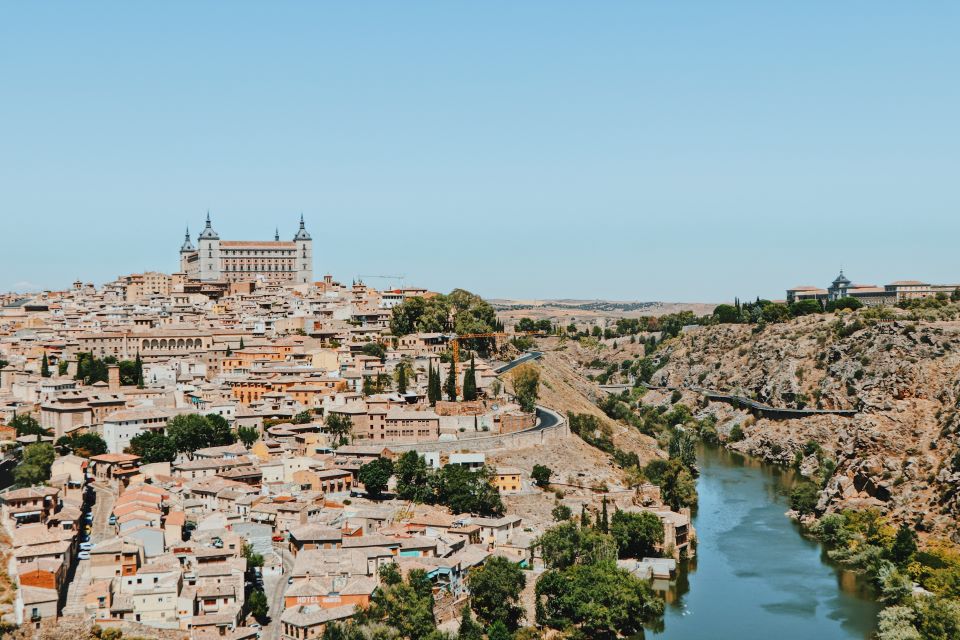
Toledo is a city of 687,084 inhabitants, located in central-southern Spain, in the Castile region, one hour from Madrid. The climate is Mediterranean with transition, with cold or mild winters and hot summers.
It’s known as “the city of three religions” because among its streets you can find Christian, Muslim, and Jewish religious monuments, the beauty of which has helped to make the city recognized as part of the Unesco World Heritage.
Of particular charm are the walls in the historic center, the imposing Puerta de Bisagra, and Puerta del Cristo de la Luz. An equally emblematic building is the Mezquita de la Luz Mosque, which dates back to the 12th century and was later converted into a Christian church.
In the historic center, which is located on top of a hill, you can admire medieval-style buildings with ancient shops, and the cathedral built in Gothic style. The coexistence of different styles due to different cultures is the key to understanding and appreciating this multi-historical city.
Best time: from April to October is the hottest period, with peaks of scorching heat in July and August
Highlights: Puerta de Bisa gra, Puerta del Cristo de la Luz, Mezquita Mosque, Jewish Quarter, and Alcázar
Low-cost flights: starting from €30
Accommodation: Hotels and b&b from €45 per room
Recommended cards, tickets, and tours:
– Tour from Madrid with entrance to the Alcázaroledo and Segovia
– From Madrid: Toledo and El Greco Discovery Tour
– City tour at night with tapas tasting
8. Bilbao
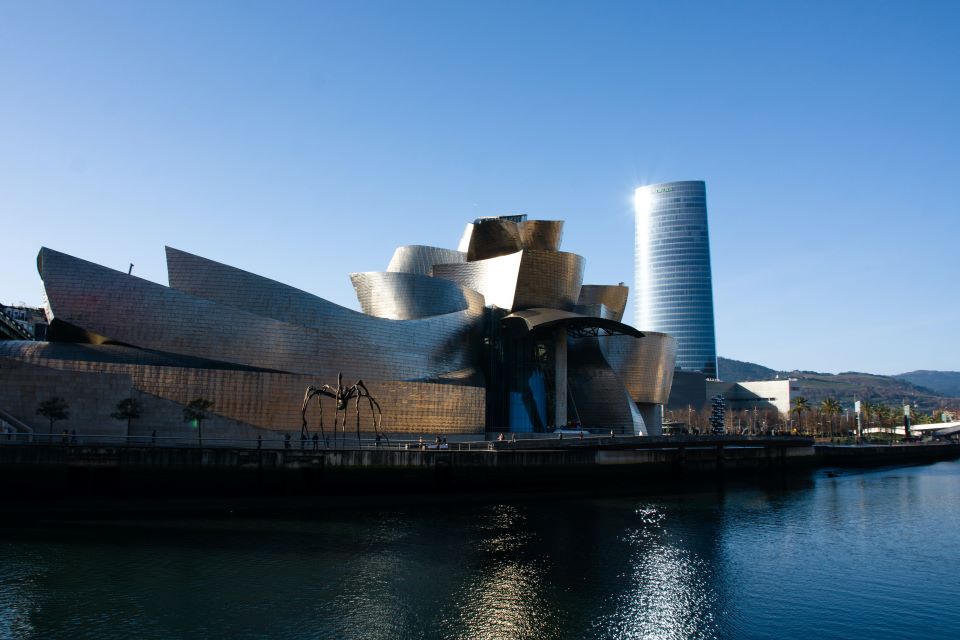
Bilbao is the largest city in the Basque Country, with 349,356 inhabitants. Here, the climate is different from the other regions of Spain; it’s oceanic, with mild, rainy winters and cool summers.
Its main feature is that it is a predominantly industrial city, which, has recently become a very attractive destination for tourists from all over the world due to its historical and artistic faces.
An emblematic date that changed the image of the city is 1997 when the Guggenheim Museum was inaugurated. It’s a building with innovative, captivating, and ultra-modern forms that it’s an artwork itself (apart from those of great value inside).
This city points to progress, with buildings and bridges with a futuristic design, without neglecting the traditions where the avant-garde walks next to the Gothic and Baroque churches located in the old part, the Casco Viejo.
The Cathedral of Bilbao is one of the stops on the Camino de Santiago. But, this city is much more than its culture. There are many places in the city that liven up the nightlife with bars where you can enjoy pintxos (the tapas of the Basque Country) until late. Moreover, from 15 August, the Semana Grande is held in the city. It’s a very popular event during which shows, concerts, and parades are organized for 9 days, and all the inhabitants participate in it.
Best time: from June to September because the weather is warmer and there is little rainfall
Main attractions: Guggenheim Museum, Museo de Bellas Artes, Plaza Nueva, Casco Viejo
Low-cost flights: starting from €70
Accommodation: hotels and b&b from €60 per room
Recommended cards, tickets, and tours:
– Guggenheim guided tour with priority entrance
– Tour of modern architecture
– 1.5 hour Segway tour of Abandoibarra and the Old Town
7. Santiago de Compostela
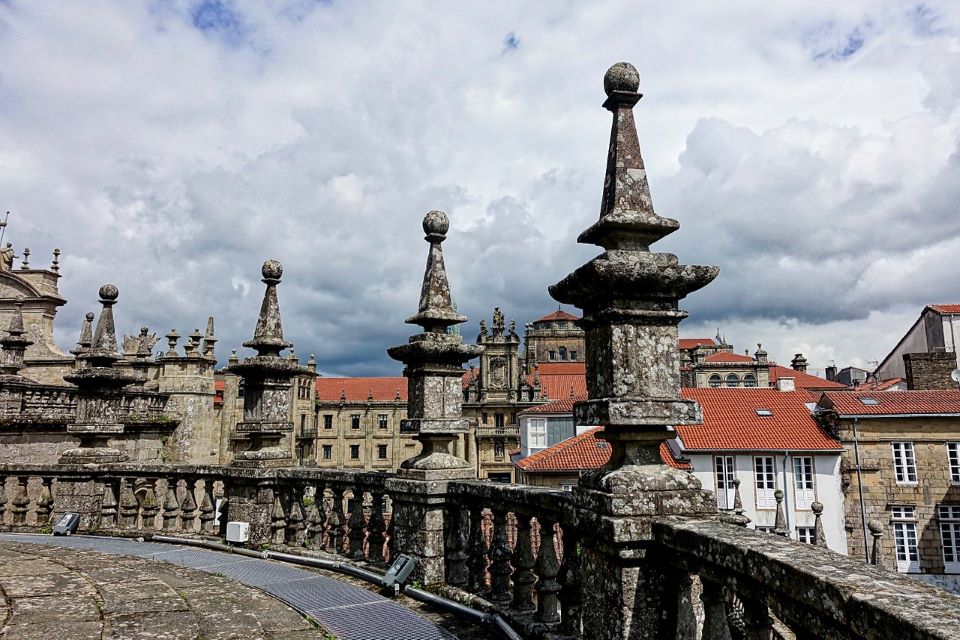
With 96,405 citizens, Santiago de Compostela is the capital of Galicia, a region located in the northwest of Spain. The climate is quite cool with cold winters and breezy summers, and the fog is a recurring phenomenon.
This city is famous mostly for the pilgrimage that has been held for over a millennium. On this pilgrimage, Christians reach the Cathedral of Santiago de Compostela where the remains of James the Great, the apostle of Jesus Christ and patron of Spain, are preserved.
The Cathedral of San Giacomo de Compostela is certainly the most notable building in the city with its majestic Baroque facade, the Portico della Gloria by Maestro Mateo, and the Capela Major where the sumptuous altar stands. Also, the visit to the roofs of the cathedral is very impressive as you can see the panorama of Santiago from there.
Furthermore, there is the historic center, still intact in its medieval aesthetics, declared a UNESCO World Heritage Site.
For those who love museums, visit the Galician Center of Contemporary Art, a modern building, and the City of Culture, ultra-modern buildings that host exhibitions and cultural events.
Best period: from June to September; during this period, there are many sunny days and the rains are rare.
Main attractions: Cathedral of San Giacomo de Compostela, Galician Center of Contemporary Art, City of Culture
Low-cost flights: starting from €75
Accommodation: hotels and b&b from €35 per room
Recommended cards, tickets, and tours:
– Lugo and Playa de Las Catedrales
– Private guided tour
6. Pamplona
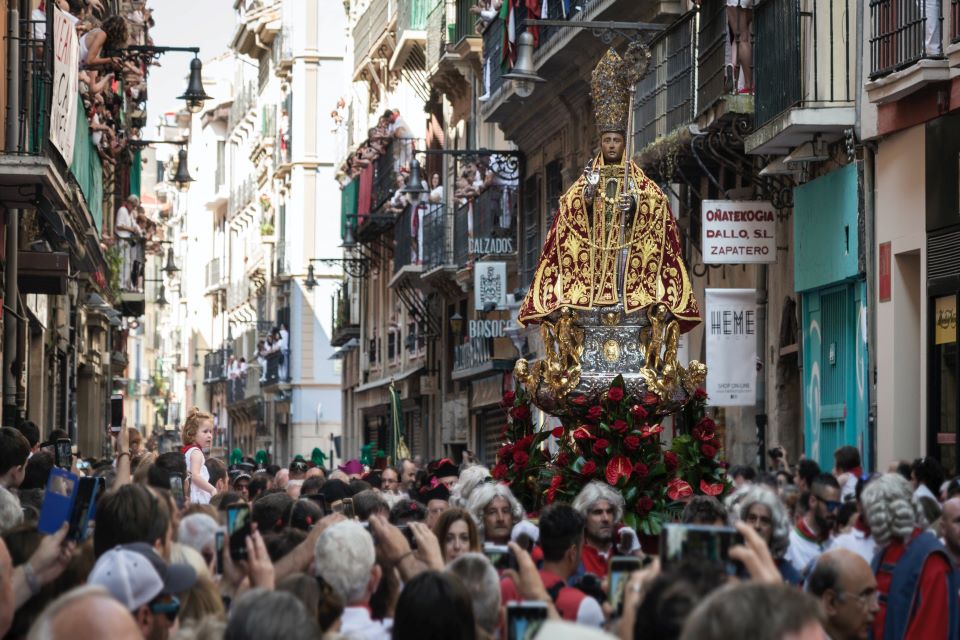
Pamplona, with a population of 199,066, is the capital of the Navarre region, north of Spain, so the climate is quite cold with harsh winters and cool summers.
It was founded by the Romans in 75 BC and today is famous all over the world for the animated week of San Fermìn, held every year in August. During this traditional festival, a crowd of locals and tourists rush through the streets of the city, in a mad race with the bulls. Once the bulls return to the appropriate mansions, the real festivities, in which the whole city is involved, begin with music and dancing. During the rest of the year, Pamplona is an enjoyable destination for its peaceful and relaxing air.
Very interesting is the walk in the central Plaza del Castillo which is surrounded by elegant buildings and the visit to the fortress of La Citadella which is surrounded by greenery where various cultural events are organized.
Among the most important museums is the Museum of Navarre, where you can find Romanesque finds, and the Museum of the University of Navarre which is located in a modern building and houses photographic exhibitions of famous local and international artists.
Best time: during the summer, the climate makes outdoor walks pleasant. Those who intend to participate in the San Fermín festival must visit Pamplona in August
Main attractions: Plaza del Castillo, Museum of Navarre, Museum of the University of Navarre.
Low-cost flights: starting from €70
Accommodation: hotels and b&b from € 50 per room
Recommended cards, tickets, and tours:
– Tour from San Sebastian
– Private transfers from the airport
5. Seville
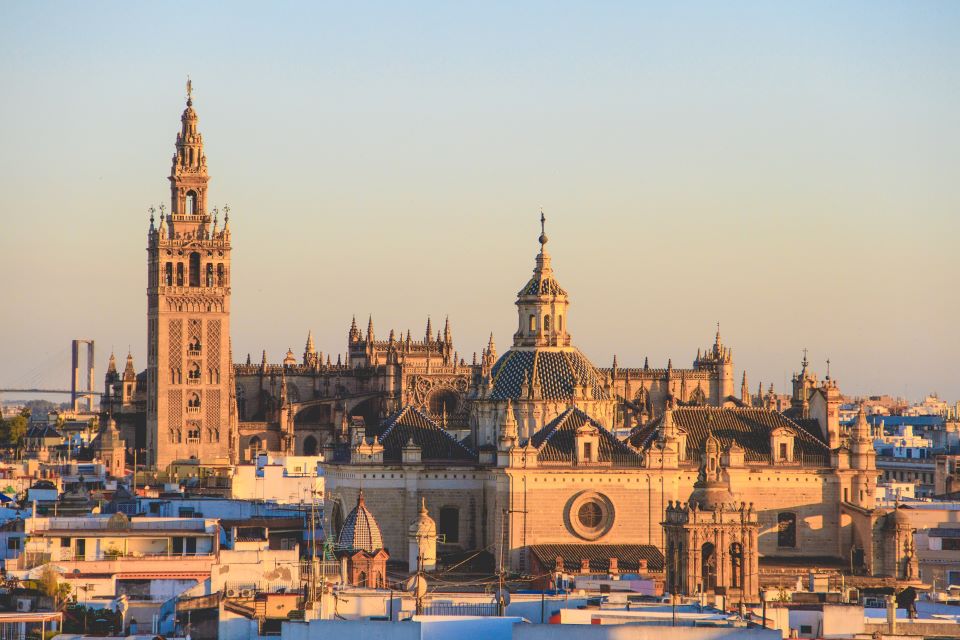
Capital of Andalusia, Seville is the fourth most populous city in Spain, with approximately 1.945 million inhabitants. The Mediterranean climate makes it one of the hottest cities in Europe, with mild winters and very hot summers.
It’s a popular destination for tourists from all over the world, who are attracted by the numerous historical monuments, the irregular squares, the many parks, and the lively nightlife that mostly characterizes the summer period.
The Cathedral of Seville is one of the largest in the world and, due to its imposing beauty, it explodes on the facade that rises in Avenida de la Costituciòn. Inside of it, there is the tomb of Christopher Columbus. The entire church was built on the remains of a mosque, of which today remains the Giralda, which forms the bell tower.
Furthermore, there is a very precious place in Seville: the General Archive of the Indies. This archive contains important documents relating to the Spanish possessions in America which tell the story and allow us to reconstruct crucial passages and events.
Between March and April, the city is in turmoil for the Easter Semana Santa and the streets are filled with people dressed in traditional costumes. In September of even years, the most important Flamenco competition in the world is held, with shows in impressive locations.
Best time: all year round; the only particularly cold months are January and February
Main attractions: Cathedral of Santa Maria, Giralda, General Archive of the Indies
Low-cost flights: starting from €55
Accommodation: hotels and b&b from €64 per room
Recommended cards, tickets, and tours:
– Skip-the-line tour of the Cathedral and optional Alcázar
– Seville Cathedral and Giralda: priority ticket
– Walking tour and optional flamenco show
4. Valencia
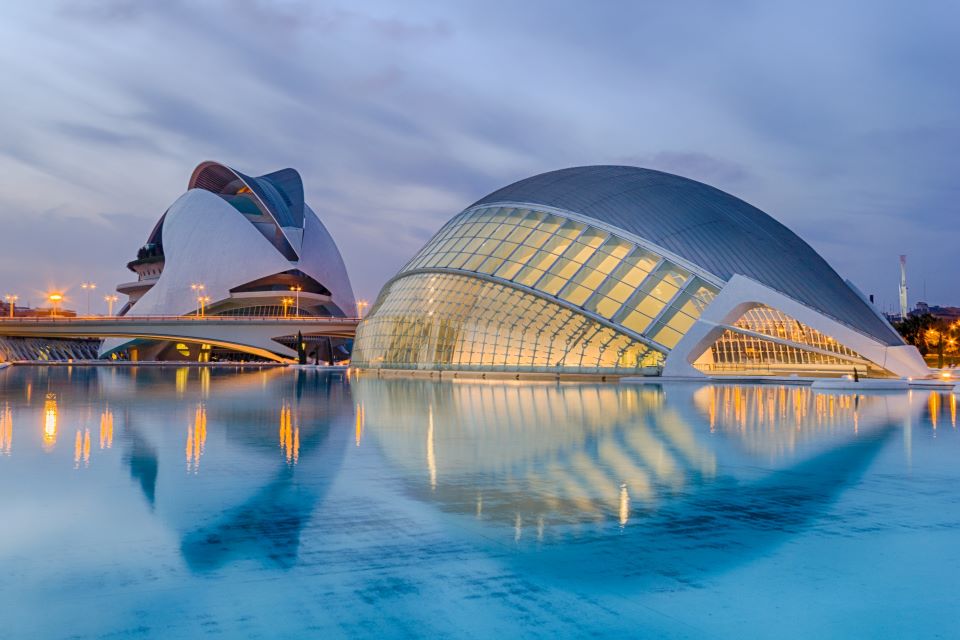
Valencia with its 2.531 million inhabitants is the third-largest city on the Iberian Peninsula and is located along the southeastern coast. The city enjoys a Mediterranean climate, so the sun is present all year round and the only rainy season is autumn.
Founded in the 2nd century BC by the Romans, the city was destroyed and was under various dominations, such as those of the Visigoths and the Srabi.
Its multicultural past is told by the many buildings that rise between its streets, among which the Gothic-style Serranos Towers, the Cathedral of Santa Maria with its Micalet, the bell tower that can be visited by climbing 207 steps, the irregular square that stands on an ancient Roman forum, and the Plaza de la Virgen.
But the spectacularity of this city also lies in its modernity, especially since 2007 for America’s Cup sports event when the port district has undergone a radical enrichment of works and buildings with futuristic architecture. The city is also known for its excellent dishes: paella, the riot of rice, fresh fish, and vegetables grown in these beautiful lands.
Best time: all year round, but from July to September you can relax on the beach and swim
Main attractions: Cathedral of Santa Maria and Micalet, Plaza de la Virgen, City of Arts and Sciences, Hemisferic, Oceanografic
Low-cost flights: starting from €45
Accommodation: hotels and b&b from €60 per room
Recommended cards, tickets, and tours:
– Hemisfèric, museum of science, and Oceanogràfic
– Tourist card for 24, 48, or 72 hours
– Valencian paella cooking class
3. Zaragoza
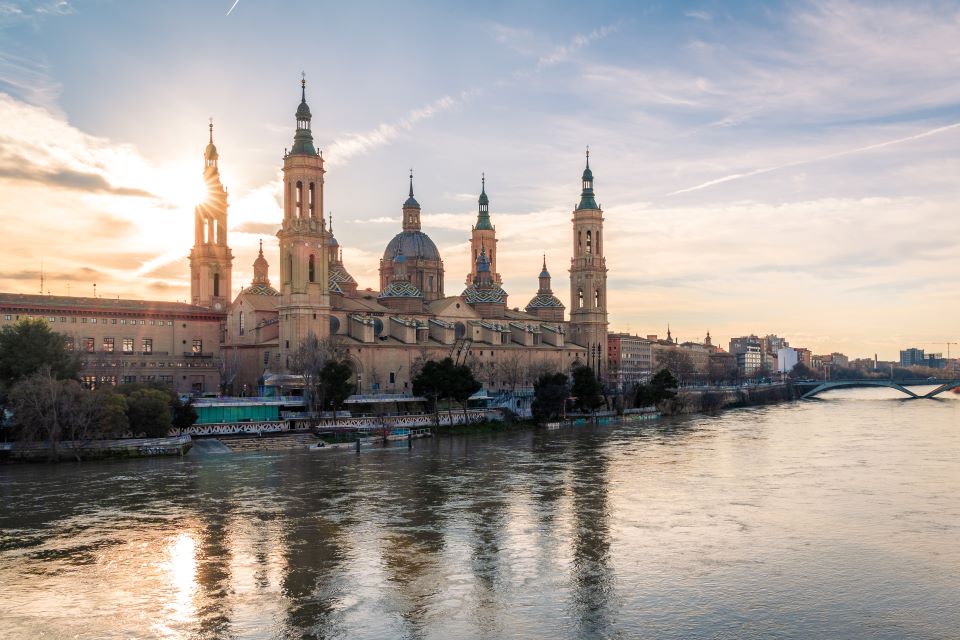
Located in the northeastern part of Spain, Zaragoza is a rather large city, with approximately 960,111 inhabitants, and the capital of Aragon. Its strategic position makes it the nerve center of the country as it’s well connected to the major Spanish cities (Madrid, Barcelona, Bilbao).
The climate is continentalized Mediterranean, with rather cold winters and very hot summers, while rainfall is scarce.
The history of the city is marked by continuous dominations, such as the Arab and Christian ones. Also, it was the scene of wars and sieges. All this is testified by the style of the buildings and monuments that characterize it. One of them is The Basilica of Our Lady of Pilar. It has 4 bell towers, a large central dome, interiors embellished with decorations, and works by ecclesiastical artists, such as Goya. Another symbolic building is the Castello de la Alijaferìa. It was built by the Muslims but then it became the seat of the Inquisition under the Christians.
In October the city is celebrating the Festa del Pilar on the 12th with great shows, bonfires, and events that liven up the city. On June 24, the night of San Juan is celebrated; a very intense and long festivity.
Best time: from May to August the climate is perfect for enjoying the days outdoors
Main attractions: Basilica of Our Lady of Pilar, Castello de la Alijaferìa, Calle del Coso
Low-cost flights: starting from €80
Accommodation: hotels and b&b from €45 per room
Recommended cards, tickets, and tours:
– Private tour with a local guide
– Wine and tapas tasting
2. Barcelona
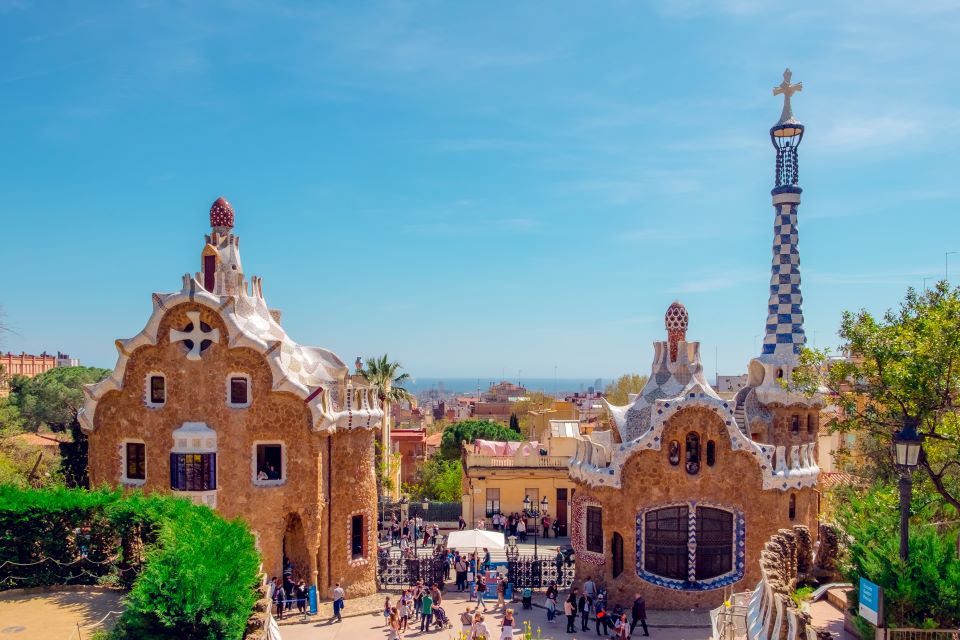
Capital of Catalonia, located in the eastern part of Spain and with 5.515 million inhabitants, Barcelona is certainly one of the most visited cities in the world and one of the most cosmopolitan. The climate is Mediterranean, with sun practically all year round.
In the city, numerous places are part of the UNESCO World Heritage Site. The art and architecture that characterize it, make it famous all over the world.
This is the city of Gaudì, the artist who contributed with his works to make the unique and extraordinary beauty of Barcellona flourish. The Sagrada Familia is one of the most famous and impressive buildings made by the artist. There are also Parc Güell, the park that was to become a sort of garden city, and Casa Batllò, the extravagant dwelling that looks like a living and talking being, and many other buildings in the city.
The city also houses the largest collection of Picasso’s works. They are displayed inside the museum located in the La Ribera district.
Furthermore, there is no lack of nightlife as the clubs are open until late. Also, the welcoming squares and good food complete the lively picture of Barcelona.
Best period: from April to June is the most suitable period for those who want to walk, while those looking for the beach and the sea must go there in the summer
Main attractions: Sagrada Familia, Parc Guell, Casa Battlò, Picasso Museum
Low-cost flights: starting from €35
Accommodation: hotels and b&b from €55 per room
Recommended cards, tickets, and tours:
– Park Güell entrance ticket
– Barcelona Aquarium: Skip-the-Line Admission Ticket
– Sagrada Familia: priority entrance ticket
1. Madrid
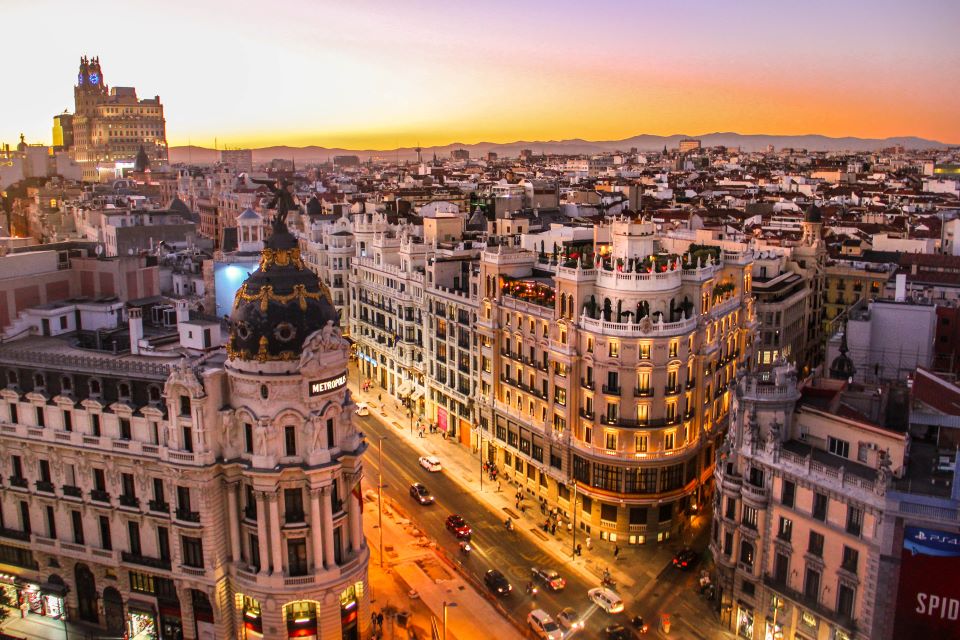
With its 6.55 million inhabitants, Madrid is the political, economic, and cultural center of Spain, hence its capital, located in the heart of the peninsula. The climate is Mediterranean, with continental influence, so the winters are quite cold and the summers dry and hot.
The history of the city is very long and what is most surprising is the absence of monuments and specific areas of great interest. The narrow streets are surrounded by beautiful Baroque buildings and elegant buildings and all represent the beauty of the city.
Of course, some places stand out for their importance, such as the Prado. It’s one of the most important museums in the world and houses works by Goya, Caravaggio, Velasquez, and many other European artists of great importance. For those who never get tired of art, a visit to the Reina Sofia Museum, which contains works from the 1900s, is a must.
In February, there is a festival that celebrates Spain’s most important contemporary art – Arco, which is quite interesting.
And, it doesn’t matter if you’re not into art because Madrid is famous all over the world for its nightlife, so your enjoyment is guaranteed.
Best time: in spring and autumn
Main attractions: Prado Museum, Reina Sofia Museum, Royal Palace of Madrid
Low-cost flights: starting from €40
Accommodation: hotels and b&b from €60 per room
Recommended cards, tickets, and tours:
– Prado Museum: direct entrance ticket
– Guided tour of the Royal Palace and priority access
– Evening walking tour with flamenco show
Check out these amazing hotel deals!
- Save up to 30% on your hotel in Hawaii!
- Last-minute holiday hotel deals
- Top hotel deals for a new year trip
- Visiting Paris? Find the Best Deals & Reviews at TripAdvisor.
- Save 30% on hotels in Ocean City, Maryland...a TripAdvisor Top 10 Summer Destination!
- Save up to 30% on your hotel on your Winter Vacation!
- Find top-rated hotels at the lowest prices on TripAdvisor. Check rates now!
- Save up to 30% on hotels for a romantic getaway!!
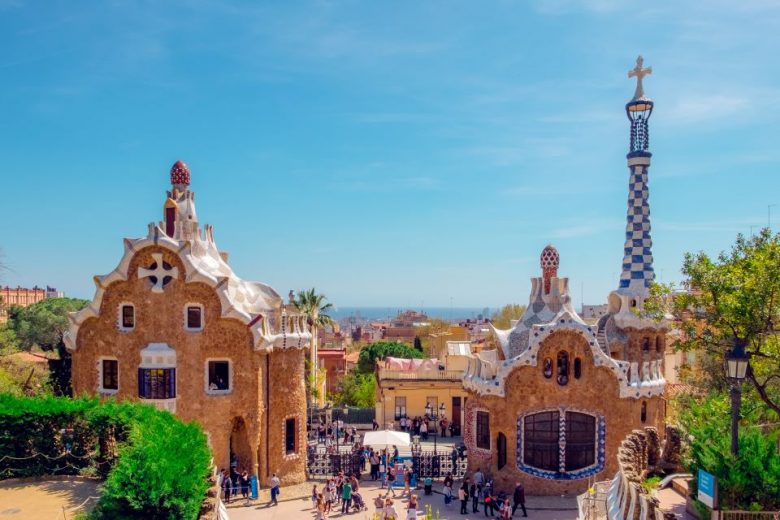
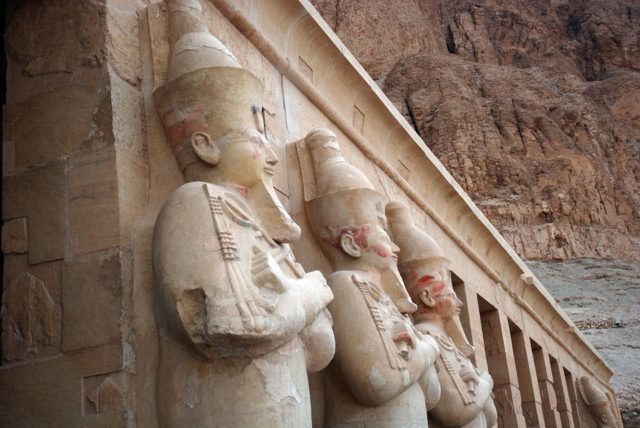




Find Us on Socials